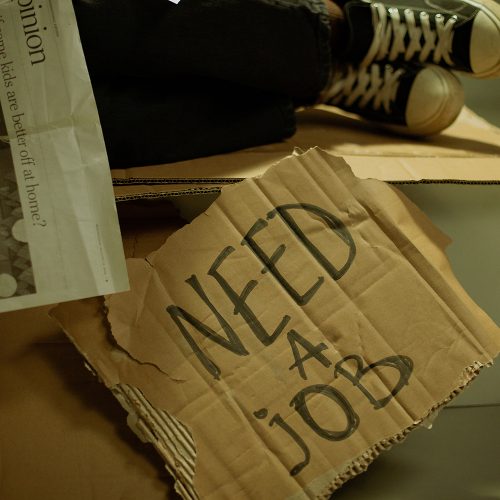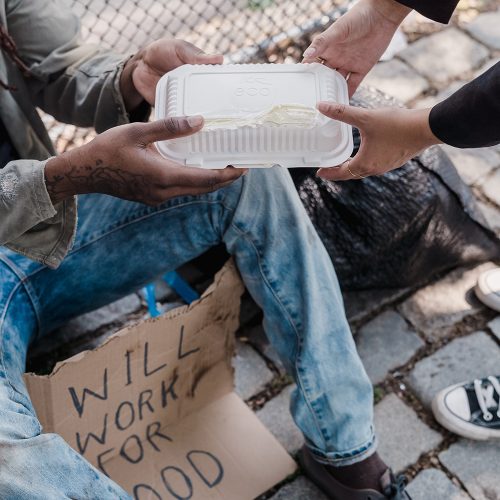Focus homeless aid on transformation,
then affordability
By Kenneth Schrupp | June 16, 2023
Los Angeles mayor Karen Bass is concentrating homeless assistance projects in high-rent areas where the homeless choose to congregate. This only perpetuates the homeless population’s reliance on government support.
In spite of the hundreds of millions of dollars the city spends to get the homeless off the streets, LA hosts one of the largest homeless populations in the United States. That’s understandable when you consider Bass’ methodology: homeless policies funnel these generous grants towards hotel purchases and room rentals to get people off the streets in the short term.
Simultaneously, taxpayers are financing apartments to the tune of $700,000 per unit – roughly the cost of the median house in California – to house homeless populations in the long-term with no strings attached. For all the money being thrown at the issue, neither of these solutions secures independence and long-term health and safety for the populations they serve.
Despite reports to the contrary, America’s homelessness crisis isn’t just a matter of housing. To address the vast portion of homeless individuals suffering from severe mental disease and addiction, lawmakers will have to focus on providing proper treatment to these people, for their own safety and the safety of their communities. To achieve this, perverse incentives within homeless services must be completely overhauled.
The only real beneficiaries of these programs are the nonprofits and government departments who can keep justifying increased funding by “serving” ever-growing numbers of homeless – no matter that the number of homeless never declines. For example, despite having spent $17 billion on homelessness in the last four years, California’s homeless population has grown more than 50 percent. Unless these programs include clear expectations and incentives to help homeless individuals achieve independence, their budgets should be slashed.
Apart from its cost to taxpayers, free housing has little impact on homeless individuals’ lifestyles. Many homeless people outright refuse offers of free housing under the Los Angeles mayor’s new programs, despite growing availability. So-called “housing resistant” individuals do not want to comply with any rules or limitations on their behavior. One case worker noted that multiple individuals overdosed during just one operation while case workers were offering housing.
While some homeless just want to be left alone to continue their use of deadly drugs, many become threats to society as their untreated mental illness manifests in spirals of ever-more-violent episodes. Newly unsealed documents lay out how the Los Angeles Police Department arrested one such individual nearly a dozen times over a decade for various escalating crimes beginning with theft in 2010 before in 2022 he stabbed a 24-year old UCLA architecture student to death in cold blood.


Despite being threats to themselves and the public, the mentally ill and/or drug-addicted homeless don’t need jail – they need extensive treatment that separates them from society until such time as they are ready for reintegration. Recognizing these are broken people, not debris to be swept under the rug or put up in free housing, means providing them with the safety and care they deserve and not allowing them to either expire on the streets or kill someone while they wait for free housing.
Rather than simply serving as many people as possible to secure more staff and resources, the goal of homeless services ought to be helping homeless people become independent, productive members of society. In practice, this means focusing on building homeless transition services in locations where those who have been released from mental health and drug rehabilitation centers could actually afford to live.
This contrasts sharply to the current “housing first” system that seeks “perfect” outcomes for a limited few while producing nearly worst-case outcomes for the rest. Free apartments in high-end neighborhoods backed by ample services bless the lucky few while everyone else languishes on the streets or in a motel room waiting for a free apartment and more comprehensive services.
Not only does this take away critical housing from the extremely limited rental market, but it ensures that those who receive these free apartments remain on permanent government assistance. This is due to the unreasonable expectation that most of these formerly homeless individuals will be able to afford the average rent in these areas.
Even if they are able to get work, the low-skill jobs they are able to secure will not allow them to afford to go to the shops and spaces in these areas and integrate into these communities. While a few will live rent-free on government assistance, human suffering proliferates among the untreated and unsheltered endlessly waiting on sidewalks in droves for free apartments
So what’s the alternative?
The immediately apparent solution would be to focus on growing homeless services in areas where low-skill wages are high enough for individuals to afford to live on their own. With finite resources to spend on homeless services and housing, building in more affordable areas would allow for the construction of far more units of transitional housing than in the highly desirable neighborhoods where projects tend to concentrate – and where they provoke the most community resistance.
But without guardrails, this solution would be catastrophic for the already-struggling areas that are more affordable. For example, when the Hotel Whitcomb in downtown San Francisco received a population of 400 homeless people through Gov. Gavin Newsom’s Project Roomkey program to quickly get people off the streets, homeless individuals each caused an average of $48,750 in damage to the hotel.
Hotel Whitcomb had the resources to retain lawyers to claw back some of the costs from the damage wrought by these individuals, but facilities in more affordable communities near major metropolises would have little recourse.
We are playing hot potato with the homeless individuals, 78 percent of whom report extreme mental health issues and 75 percent who report addiction. To stop this back and forth, we must force homeless individuals to get treatment at live-in programs away from the places where their mental health and addiction have gone critical must be a top priority.
Mandating that homeless individuals with any of these conditions receive treatment as a precondition for graduation to transitional housing would be far more humane than allowing them to die on the streets, sending them to prison, or paying them to live in communities where they put local residents and businesses in harm’s way.
California’s coming CARE (Community Assistance, Recovery and Empowerment) Courts will soon allow judges to order treatment plans for the state’s estimated 7,000 to 12,000 individuals with untreated schizophrenia and other related disorders. However, to successfully treat California’s 116,000 homeless, CARE Courts must be expanded to include debilitating drug addiction and more common mental illnesses such as severe bipolar disorder that make living regular lives as responsible citizens nearly impossible.
Only once individuals have successfully been treated, those who are no longer a danger to themselves or society should be able to make use of transitional housing in affordable areas to continue along their path to independence, gaining the job skills and stability they need to again be fully functioning members of society.
Without mandated treatment, we destroy communities by maintaining hostile populations in their backyards. Without enabling transitions to independence through post-treatment services in affordable communities, we create a permanent underclass that is deployed as a political weapon. Only by focusing on the path to independence can we give California’s homeless the chance at dignity, and its everyday citizens the peace and safety they deserve
Kenneth Schrupp is a Young Voices contributor writing on the intersection of business, politics and media. He’s a public affairs consultant and serves as editor in chief of the California Review, an independent political journal.
